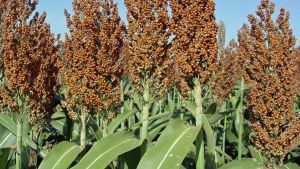JAKARTA - The threat of COVID-19 has not subsided, now a new virus has arrived that has caused an uproar for the world's population. WHO again received reports of cases of monkeypox disease from 12 non-endemic countries.
Those countries are Australia, Belgium, France, Germany, Italy, United Kingdom, United States of America, Canada, Netherlands, Sweden, Portugal, and Spain. At least in mid-May 2022, there were 92 confirmed case reports and 28 cases were still suspected. The most in England and Portugal with 21-30 confirmed cases, and Spain with 30 confirmed cases and 6-10 suspected cases.
Preliminary genomic sequences from several cases in Europe have shown similarities to strains that had limited distribution in the UK, Israel, and Singapore in 2018.
But only 3 weeks later, the monkeypox virus continued to spread to 70 countries. The WHO declared the monkeypox outbreak a global health emergency on July 23, 2022.

"This outbreak is spreading rapidly through a mode of transmission that we don't really understand," said WHO Director-General Tedros Adhanom Ghebreyesus.
Monkeypox is a rare zoonotic disease caused by infection with the monkeypox virus. It was first discovered in 1958 attacking a colony of pet monkeys for research. The first human case occurred in 1970 in the Democratic Republic of the Congo.
Since then, cases of monkeypox have been reported to have infected people in several other Central and West African countries such as: Cameroon, Central African Republic, Ivory Coast, Democratic Republic of the Congo, Gabon, Liberia, Nigeria, Republic of the Congo, and Sierra Leone. That is why, WHO calls these countries monkeypox endemic countries.
Fast Skin-to-Skin Transmission
Monkeypox is spread through close contact with a symptomatic person through skin to skin and saliva. Some studies also mention transmission occurs through blood, semen, vaginal fluids, amniotic fluid, and breast milk.
However, the Head of the Monkeypox Task Force, the Executive Board of the Indonesian Doctors Association (IDI), dr. Hanny Nilasari could not confirm this research. According to her, there is one journal that states that pregnant women infected with monkeypox can infect their children at birth.
“Children are born with skin-to-skin contact, the infection is already in the baby's blood. If it spreads through breast milk, this is just a report, there is no clinical evidence," said Dr. Hanny in a Media Group Interview with IDI, Friday (5/8).
Likewise transmission through semen and vaginal fluids. Basically, continued Dr. Hanny, monkeypox is not a sexually transmitted disease. Thus, it is not sex that triggers the transmission of the monkeypox virus, but skin-to-skin contact that occurs in sexual contact activities.

"There are indeed a lot of reported concentrations, many of these cases in special populations in the gay, lesbian, and HIV population were reported in populations that were quite affected by monkeypox. Even so, it is still theoretically reported that transmission is not only due to sexual contact," continued dr. Hanny.
WHO is still learning about how long people with monkeypox can transmit it. In the current situation, the sufferer can be infectious to the point that all of their lesions crusted over, the scab had fallen off, and a new layer of skin had formed underneath.
A lesion is a damage or abnormality of any part or tissue in the body.
If infected, a person can be reinfected. The theory, according to dr. Hanny is almost the same as other viruses.
“If someone has a viral infection, at that time of course there will be symptoms. Then, the body will form an antibody. It is possible to get re-infected, but again the body will form antibodies again and will be protected," she said.
The point is endurance. “If our resistance is good, and the contact is not too close, it is possible that we will not be infected. Except if the patient has immunocompromise or immune deficiency, the immune system is very weak so it can be easily infected, even repeatedly," explained dr. Hanny.
Bouncy and purulent rash
Symptoms of monkeypox are almost similar to chickenpox. Skin disorders appear in the form of a red bouncy rash, even pus. However, according to Dr. Hanny, if the monkeypox forms a rash, they stick together.
Usually attacks the face, around the eyes and mouth to the inside of the mouth. Then, under certain conditions, it can continue to the trunk, arms, palms, stomach, body, back, anus, or other genital areas.
"95 percent of the manifestations are on the face mainly. So it's very easy to recognize, then 75 percent on the palms and soles. Mucosa, for example in the mouth area, genital area, eye area, it's 70 percent. In the genitals it's not too much 30 percent only Then in the mucous membranes of the eyes 20 percent," said Dr. Hanny.
SEE ALSO:
The appearance of a rash in monkeypox is usually accompanied by symptoms of fever, headache, and sore throat.
"The incubation period from the first entry of the virus until symptoms appear can be 1-4 weeks. If the immune system is weak, complications can occur, skin infections, respiratory infections, and brain infections can occur and end in death," she added.
Not a Deadly Disease
However, there is no need for people to panic. Monkeypox is not a deadly disease.
“This disease is a self-limiting disease. That is, it can heal itself of course by implementing a clean and healthy lifestyle. If the symptoms are severe, it can be treated with antivirals. The monkeypox mortality rate of 0-16 percent can be handled through being aware of the community," continued dr. Hanny.

As with other virus prevention, efforts to protect yourself from monkeypox can be done by avoiding direct contact with symptomatic people. Implement safe sexual relations, maintain hand hygiene using water and soap or hand sanitizer, use masks, and practice proper coughing and sneezing etiquette.
"Until today, there have been no confirmed cases in Indonesia, thank God. Although there are some who provide information that there are suspected or suspected cases currently being treated at the hospital. However, we are still waiting for the laboratory results to check whether it is confirmed or not," said dr. Hanny.
The English, Chinese, Japanese, Arabic, and French versions are automatically generated by the AI. So there may still be inaccuracies in translating, please always see Indonesian as our main language. (system supported by DigitalSiber.id)














